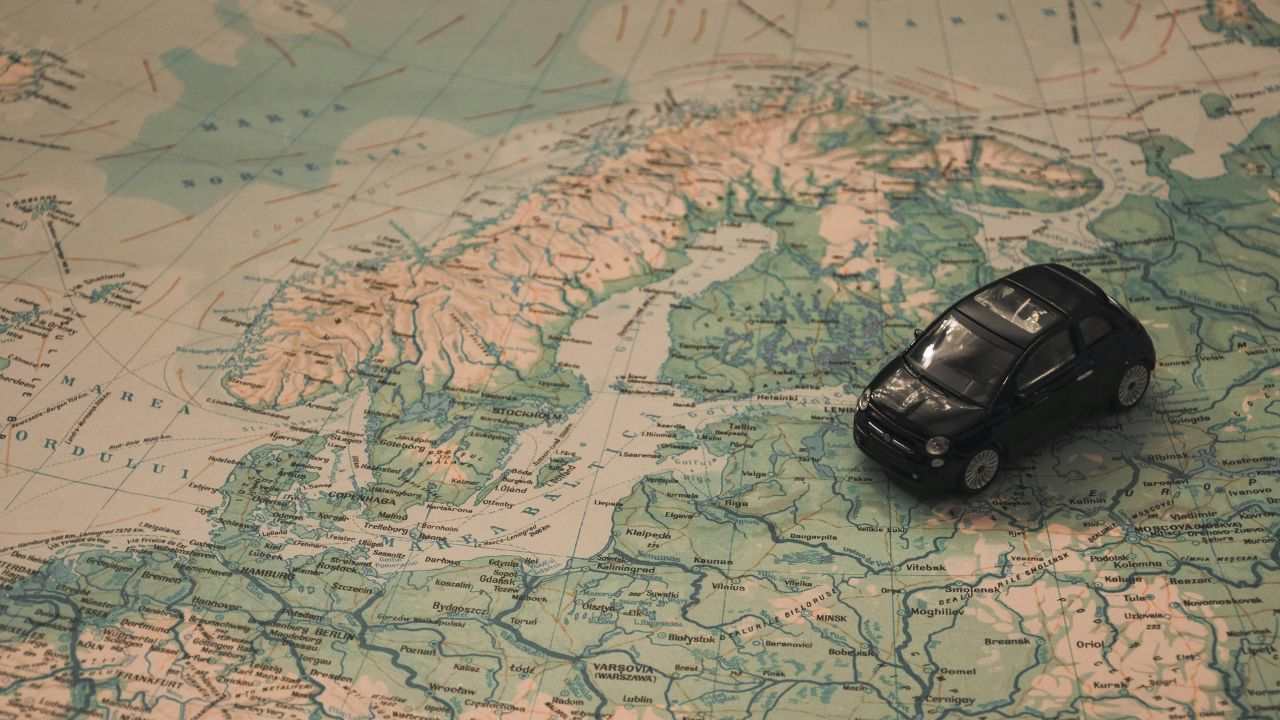
Best Europe Trip Itinerary 2 Weeks: Unforgettable Journey!
For the best Europe trip itinerary 2 weeks, prioritize top cities like Paris, Rome, and Barcelona. Mix culture, history, and leisure by massemusclee.net including destinations such as Venice, the Swiss Alps, and Amsterdam.
Planning the perfect European adventure can be both exhilarating and challenging. With only two weeks at your disposal, balancing sightseeing, relaxation, and travel time is crucial. Europe’s rich tapestry of history, art, and landscapes calls for a curated journey through its most iconic cities and scenic routes.
Your itinerary should offer a taste of the continent’s diverse cultures, from the romantic boulevards of Paris to the ancient ruins of Rome. Consider a route that allows you to immerse in the modernist marvels of Barcelona, float through Venice’s serene canals, revel in the majestic views of the Swiss Alps, and explore Amsterdam’s artistic heritage. Careful planning ensures each day is packed with unforgettable experiences, creating a seamless blend of discovery and leisure that showcases the very best Europe has to offer in a fortnight.
Embarking On The Ultimate European Adventure
Embarking on the Ultimate European Adventure
Get ready to head out on the adventure of a lifetime! Travelers far and wide dream about exploring Europe, with its rich history, stunning architecture, and diverse cultures.
But with just two weeks at your disposal, planning is key to making the most of your European quest. Imagine standing beneath the Eiffel Tower, savoring gelato by the Trevi Fountain, and wandering through the art-filled streets of Barcelona.
This is no ordinary trip; it’s your ultimate European escapade.
Selecting Your Top Destinations
Selecting Your Top Destinations
With a plethora of breathtaking cities, picking the perfect spots is crucial. Aim for a mix of your long-awaited dream destinations and places that fit neatly into your travel route.
Paris: The City of Love, art, and fashion.
Rome: History comes alive in the Eternal City.
Barcelona: Indulge in Catalonia’s masterpieces.
Create a table listing cities and must-see attractions:
| City | Attraction |
|---|---|
| Paris | Louvre Museum |
| Rome | Colosseum |
| Barcelona | Sagrada Familia |
Research transportation options early to save on airfares and train tickets, plus gain extra time at iconic sights. Now, onto melding the renowned with the undiscovered!
Balancing Iconic Sights and Hidden Gems
Balancing Iconic Sights And Hidden Gems
Dive deep into Europe’s heart by mixing tourist hotspots with off-the-beaten-path treasures.
Start early to beat the crowds at popular monuments.
Ask locals for their favorite spots; they know best!
Seek out lesser-known marvels:
Lyon: Culinary wonders in France’s gastronomic haven.
Plovdiv: Amidst Bulgaria’s ancient Roman ruins.
Ghent: Medieval charm without the Belgian tourist masses.
Experience a perfect blend of the monumental and the intimate to create memories that last a lifetime!
Remember to pace yourself and enjoy each moment. Your two-week European jaunt awaits!
Crafting The Perfect Two-week Itinerary
Picture this: Two weeks, one continent, and an adventure of a lifetime. The dream of weaving through the vibrant tapestry that is Europe in a fortnight is exhilarating. Variety abounds, from the sun-kissed Mediterranean coasts to the majestic historical capitals. Crafting your European escapade requires careful planning to maximize every exhilarating moment. Embrace a mix of iconic sights and hidden gems, balancing rest with exploration. Get ready to embark on a journey designed to create memories that shimmer forever.
Mapping Out The Route

Europe’s diversity demands a strategic approach to travel routes. Selecting destinations within close proximity cuts down travel time. Opt for efficient connections like high-speed trains or budget flights to crisscross the continent. Refer to a map and draft a loop, ensuring ease of transit between stops. Prioritize your must-see locations, then sketch a logical path threading them together.
Begin in London: Dive into the bustling charm, historic landmarks, and diverse culture.
Paris beckons next: A swift train ride away, unfolding romance, art, and cuisine.
Rome awaits: History’s pages turn with every step in the Eternal City.
Conclude in Barcelona: A vibrant finale with Gaudí’s wonders and beachside delights.
Allocating Time Wisely
Savvy travelers know time is their most precious currency. Balance is key when exploring Europe’s treasures. Major capitals like Paris or Rome deserve at least three days for their myriad attractions. Smaller cities like Amsterdam or Prague thrive in a two-day visit. Always include downtime between sightseeing to reflect and savor the local vibe.
| City | Days |
|---|---|
| London | 3-4 |
| Paris | 3 |
| Rome | 3 |
| Barcelona | 2-3 |
Intersperse cultural landmarks with verdant parks and quiet cafes. The flexibility to wander leads to authentic discoveries. Your tailored two-week itinerary fuses highlight with the pulse of Europe’s streets. The result: a collection of experiences as unique as you.
Essential Tips For Multi-country Travel
Embarking on a two-week European adventure means embracing the excitement of hopping between countries. Tips for smooth travel are crucial. They help you enjoy the breathtaking landscapes and rich cultures without a hitch. Planning is key. Let’s dive into some of the essentials: navigating visas, border crossings, and managing multiple currencies.
Navigating Visas And Border Crossings
Traveling between European countries often requires understanding different visa requirements. Two weeks in Europe might mean multiple visas. Check each country’s rules in advance.
- Use the Schengen Area advantage if applicable.
- Always carry your passport and travel documents.
- Organize all documents in a handy folder.
Border crossings within the Schengen can be seamless. However, some countries conduct random checks. Prepare for occasional stops. Outside the Schengen, expect more formal procedures. Research and prepare. That way, your trip stays smooth.
Managing Multiple Currencies
Dealing with different currencies can be a challenge. Not all European countries use the euro. Understanding currency management is key.
| Country | Currency | Tips |
|---|---|---|
| France | Euro (€) | Widely accepted |
| Czech Republic | Czech Koruna (Kč) | Local currency recommended |
| United Kingdom | Pound Sterling (£) | Cards often used |
Use a combination of cards and cash. Keep a small amount of local currency on hand for each country. Inform your bank of your travels to avoid card issues. Consider using multicurrency bank accounts or travel cards for convenience and savings on exchange rates.
Cultural Experiences Not To Miss
Cultural experiences enrich any European trip, making unforgettable memories. Let’s dive into Europe’s rich tapestry of culture through its local cuisine and vibrant festivals.
Local Cuisine Highlights
Europe’s culinary diversity is a tapestry of flavors. Each country offers a unique taste.
- Italy: Savor authentic pizza in Naples and creamy gelato in Florence.
- France: Indulge in a fresh croissant in Paris and bouillabaisse in Marseille.
- Spain: Delight in tapas, paella, and churros, each region with its own twist.
Farmer’s markets and street food vendors provide a direct path to a country’s culinary heart.
Festivals And Events To Time Your Visit With
Europe’s calendar brims with vibrant festivals. Plan your trip to coincide with these spectacles.
| Country | Festival | Time of Year |
|---|---|---|
| Germany | Oktoberfest | Late September – Early October |
| Spain | La Tomatina | Late August |
| Edinburgh | Edinburgh Festival Fringe | August |
Check local calendars for small-town fiestas and street parades for an authentic experience.
Must-know Practical Travel Advice
Embarking on a two-week European adventure? Exciting times ahead! But before jetting off, a peek at some savvy travel tips can transform a good trip into a great one. Let’s delve into the practical advice that will keep you one step ahead on your journey.
Packing For Diverse Climates
Europe’s weather can be tricky, often changing from one country to another. Being prepared is key. Follow these steps to pack smart:
- Layer Up: Choose versatile clothing that layers easily. This way, you’re ready for hot days or chilly evenings.
- Waterproof Gear: A lightweight raincoat or umbrella should always find space in your bag. Sudden showers won’t catch you off guard.
- Footwear: Comfort wins over style. Select shoes that support long walks and cobblestone streets.
- Accessories: Don’t forget sunglasses, hats, and scarves. They shield you from the sun and the wind.

Credit: www.pexels.com
A compact travel wardrobe will ensure you enjoy every moment without the baggage drag.
Staying Connected Across Borders
Staying in touch is essential, yet roaming charges can be a beast. Let’s tame them:
Local SIM Cards: Purchase a local SIM upon arrival for lower rates and better coverage. Remember to unlock your phone before leaving home.
Wi-Fi Hotspots: Cafés and libraries often offer free Wi-Fi. Save data by downloading maps and information while connected.
Travel Apps: Apps like WhatsApp and Skype let you call and text over Wi-Fi. This can be a lifeline when you need it most.
In this digital age, a few smart moves ensure you’re only a click away from home comforts.
Capturing Memories: Documenting Your Trip
Embarking on a two-week journey across Europe promises an adventure of a lifetime. Each destination unfolds a new chapter in your travel story. Imagine standing amid the grandeur of ancient Rome or basking in the Parisian summer sun. As you traverse this continent of wonder, you’ll want to hold on to your moment. Capturing memories becomes as vital as the voyage itself. Discover how to document your travels, creating a treasure trove of experiences you can revisit time and again.
Taking The Perfect Travel Photos
Vivid travel photos act as windows back to the moments you cherish. Mastering a few key photography tips will help you take snapshots that stand the test of time. Review these highlights to sharpen your photo skills:
- Capture the golden hour light for magical shots.
- Seek unique angles for landmarks and scenery.
- Include locals and culture for authentic mementos.
- Use the rule of thirds for balanced compositions.
- Always keep your camera ready for unexpected wonders.
Keeping A Travel Journal
Your personal narrative of the adventure takes form in a travel journal. It’s a sanctuary for thIt’sts, sketches, and stories. Your entries become a textured map of your sojourn. Consider jotting down these journal elements:
- Daily highlights and quirky observations.
- Doodles of scenes that photographs can’t capture.
- Stubs andantes from your explorations.
- Reflections on the food, culture, and people you meet.
- Future plans inspired by your current travels.
Frequently Asked Questions For Best Europe Trip Itinerary 2 Weeks
What Are Top Highlights For A Europe Itinerary?
A 2-week European trip often includes major cities such as Paris, Rome, and Barcelona. Landmarks like the Eiffel Tower, Colosseum, and Sagrada Familia are must-sees.
How To Budget For Europe In 14 Days?
Determine daily expenses, including accommodation, food, transportation, and attractions. Advance bookings and travel passes can help save money on your 2-week itinerary.
What’s The Best Travel For Europe?
Spring (April to June) and Fall (September to November) offer mild weather, fewer crowds, and generally lower travel costs compared to the summer peak season.
Conclusion
Embarking on a two-week European journey rewards travelers with culture, history, and beauty. Craft your ultimate itinerary using local insights and tips from our comprehensive guide. Discover vibrant cities, serene landscapes, and culinary delights. Start planning now to create memories that last a lifetime in Europe’s enchanting European travels!